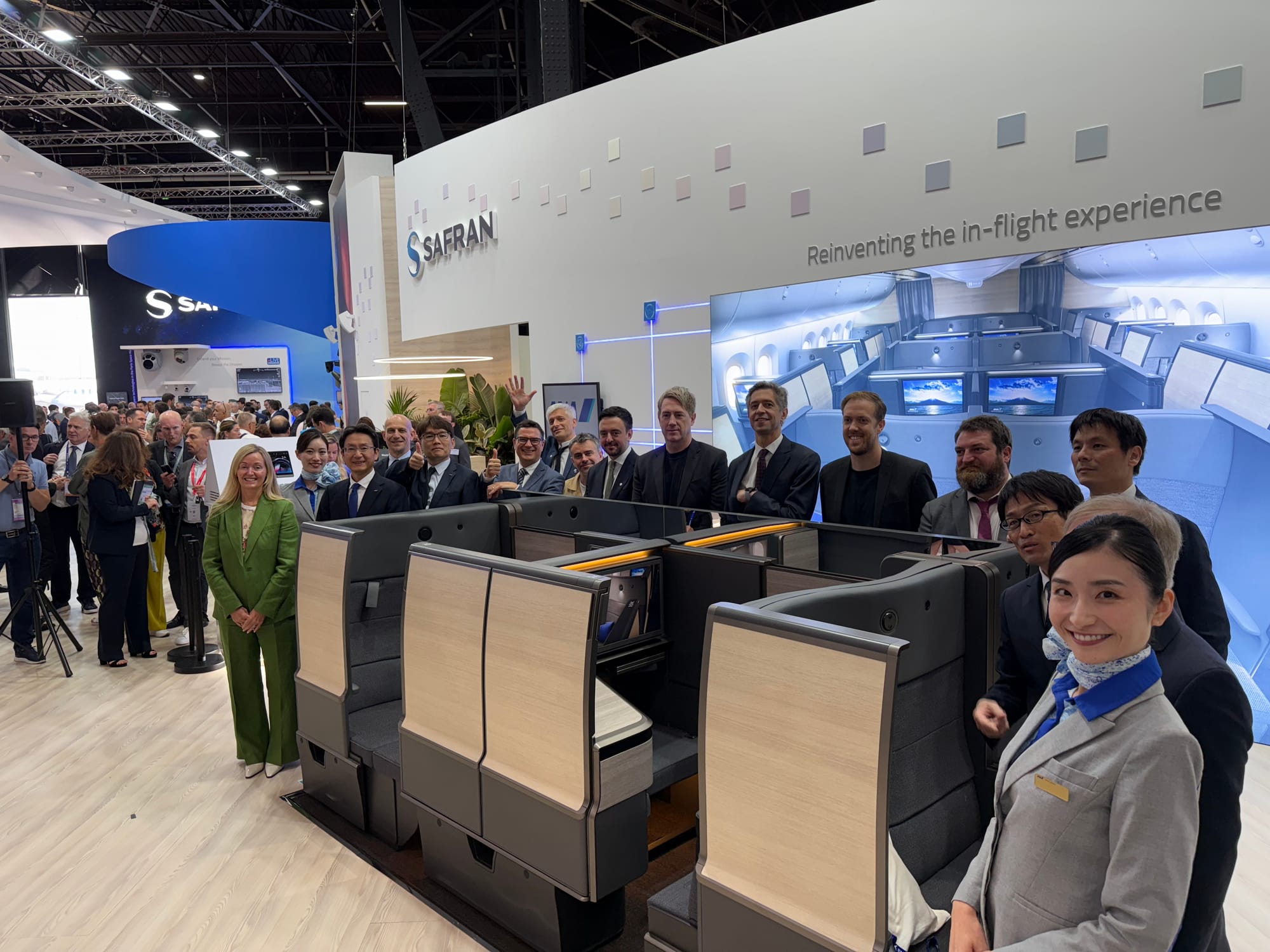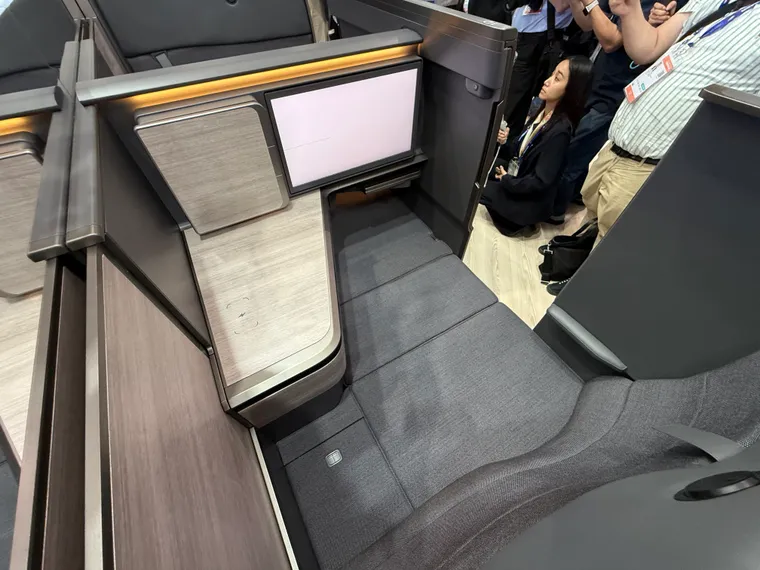Sofa seats are back in business. ANA’s new longhaul 787 business class suite — The Room FX from Safran Seats — is the most impressive product we’ve seen in years. In layout terms, it is an evolution of the forwards-backwards stagger that Safran markets as Fusio and ANA chose as The Room on its Boeing 777-300ER fleet, and which is widely acknowledged as the best business class seat currently flying.
But where Fusio slides forward to recline, The Room FX’s only mechanical movement is the legrest raising to create a fully flat bed space via the sofa seat method first introduced by Collins Aerospace with AirLounge for Finnair.
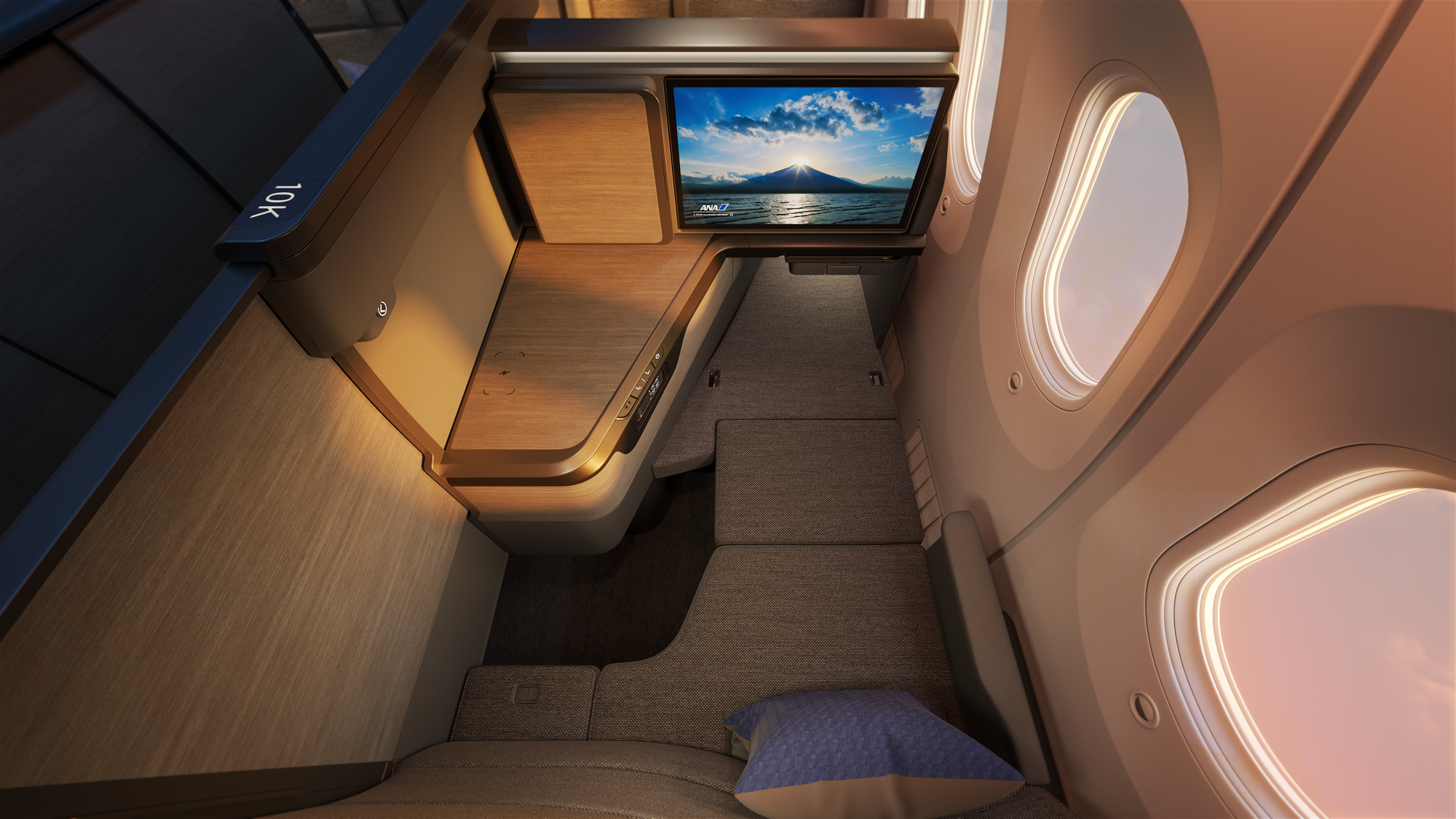
Due to début in 2026, The Room FX — for “Future Experience” — is also the Safran name for the new sofa product. ANA and Safran have worked with Acumen on the design, with aviation seat design legend Ian Dryburgh present at Le Bourget at the unveiling on Safran’s enormous stand, in between engines and airframe elements. Safran confirms to me that the seat will be manufactured in Issoudun, its Safran Seats France facility that is the successor to French seatmaker Sicma.
Quick video of the new ANA Safran The Room FX business class for the 787-9, live from #PAS25
— The Up Front (@theupfront.media) 2025-06-17T07:41:09.178Z
We’re on the ground at the Paris Air Show, bringing you the first information on The Room FX from the press conference unveiling the seats — keep reading for our extra analysis with real-world pictures, in-seat impressions and more details from ANA, Safran and Acumen. The Room FX it will be a major part of our discussion later today on our evening edition of the 40,000 Feet podcast for Subscribers and Pros, as well as in our Pro Readout briefing for Pro members. Subscribe to The Up Front today for all the deep detail and critical industry intelligence.
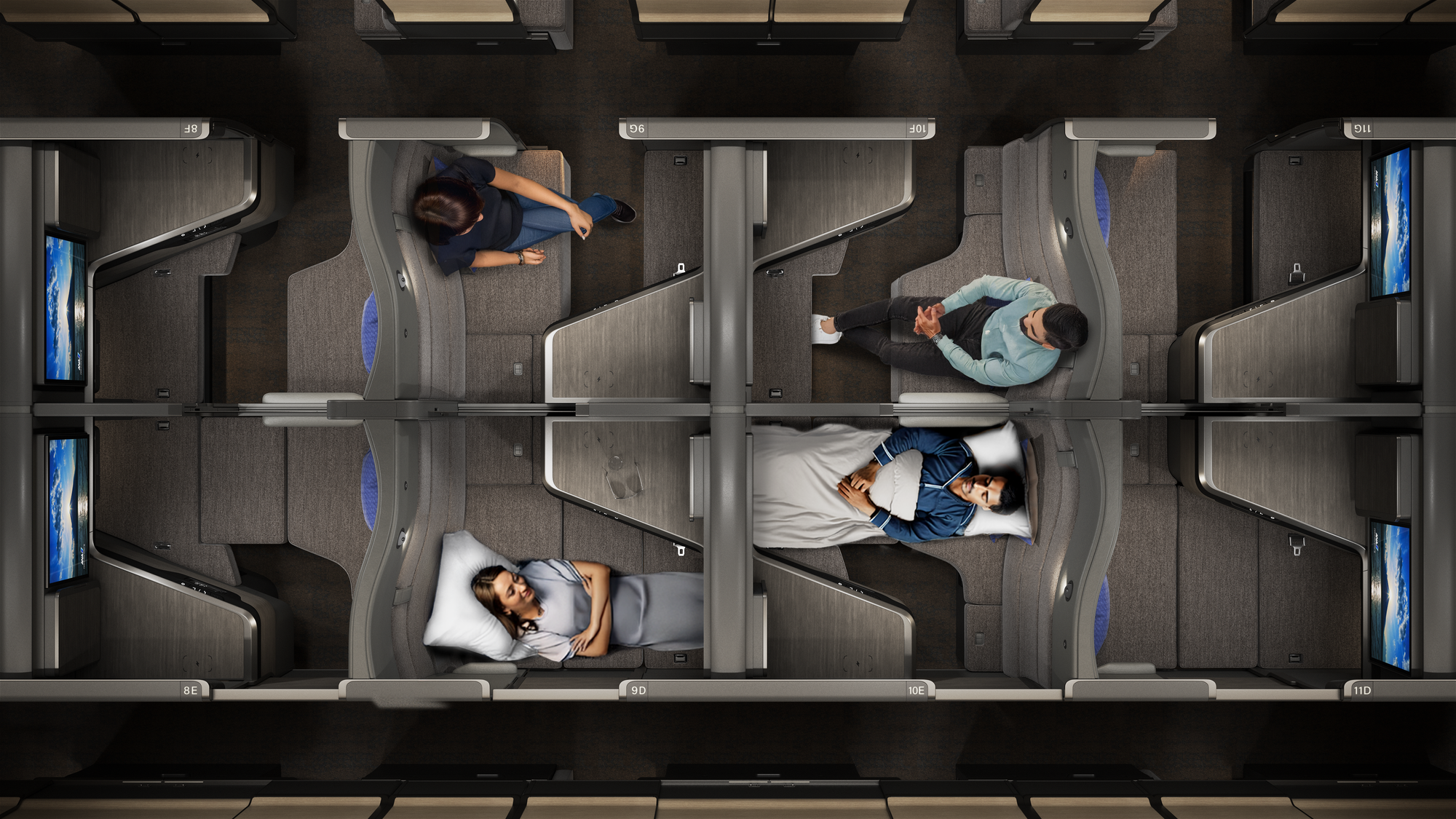
The Room FX draws key elements from Fusio’s success, but as a sofa seat, not recline-to-flat
The Room FX builds on all the width benefits of the Fusio layout on the significantly wider 777 fuselage, adapting it for the much narrower 787. Indeed, it is very impressive indeed that Safran has managed to install such a spacious staggered seat on a 787.
Aesthetically, it’s very much a continuity of ANA’s style with its Fusio implementation, but with a warmer grey with some brown hues, darker wood effect side table, a more textured effect to the doors, and more gentle curves than previously. It’s very restrained and very ANA business class.
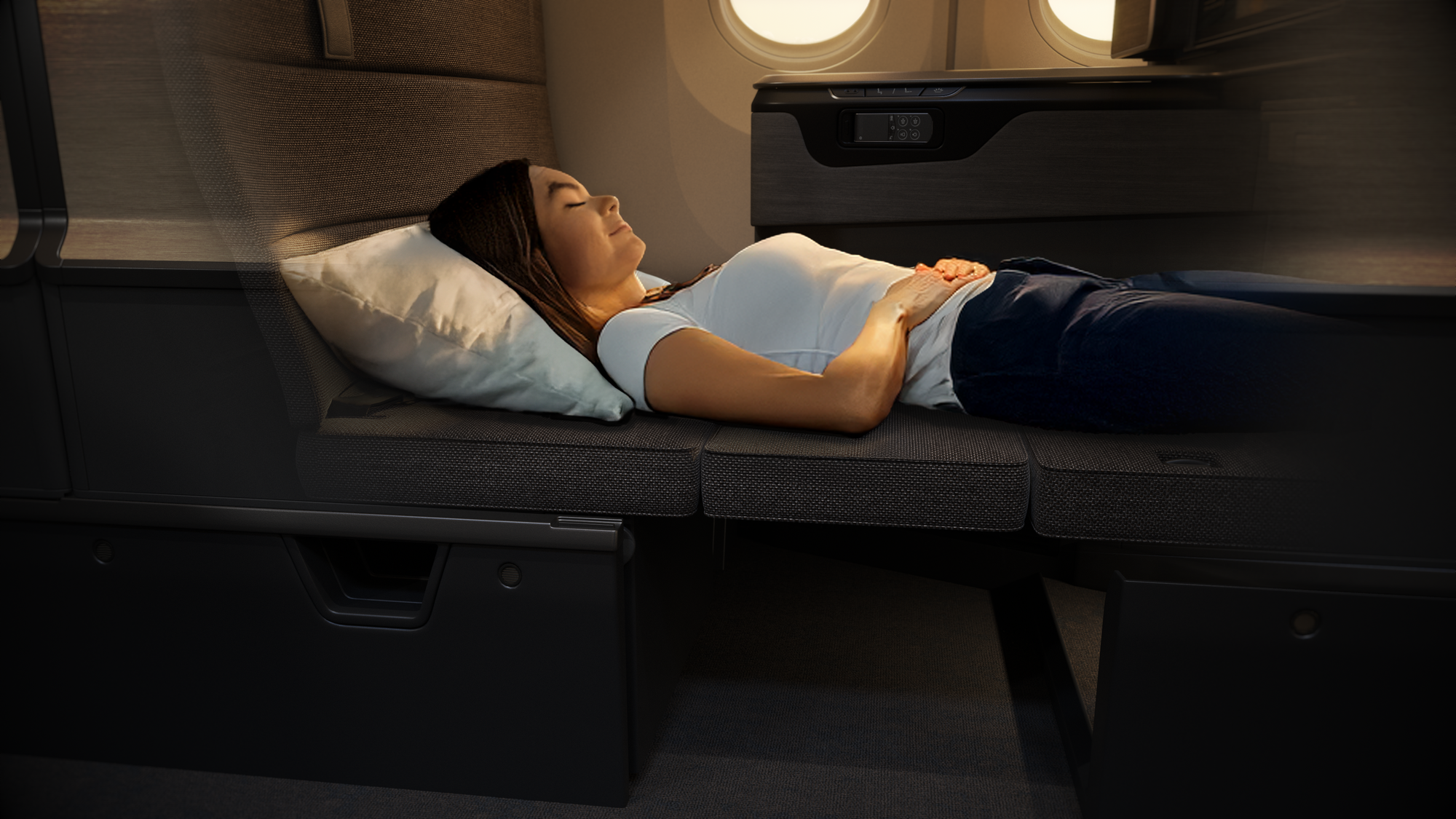
While the sofa seat is very different in mechanics and kinematics, the layout concept remains very similar to Fusio, which will be helpful for ANA in consistency of product terms.
Inherently, a sofa style seat should be much lighter and easier to maintain than a recline-to-flat business class, given its reduced mechanical travel. ANA says that the weight — even with the suite doors and high walls — is comparable to its current 787-9 Safran Skylounge seat, which is a remarkably light business product.
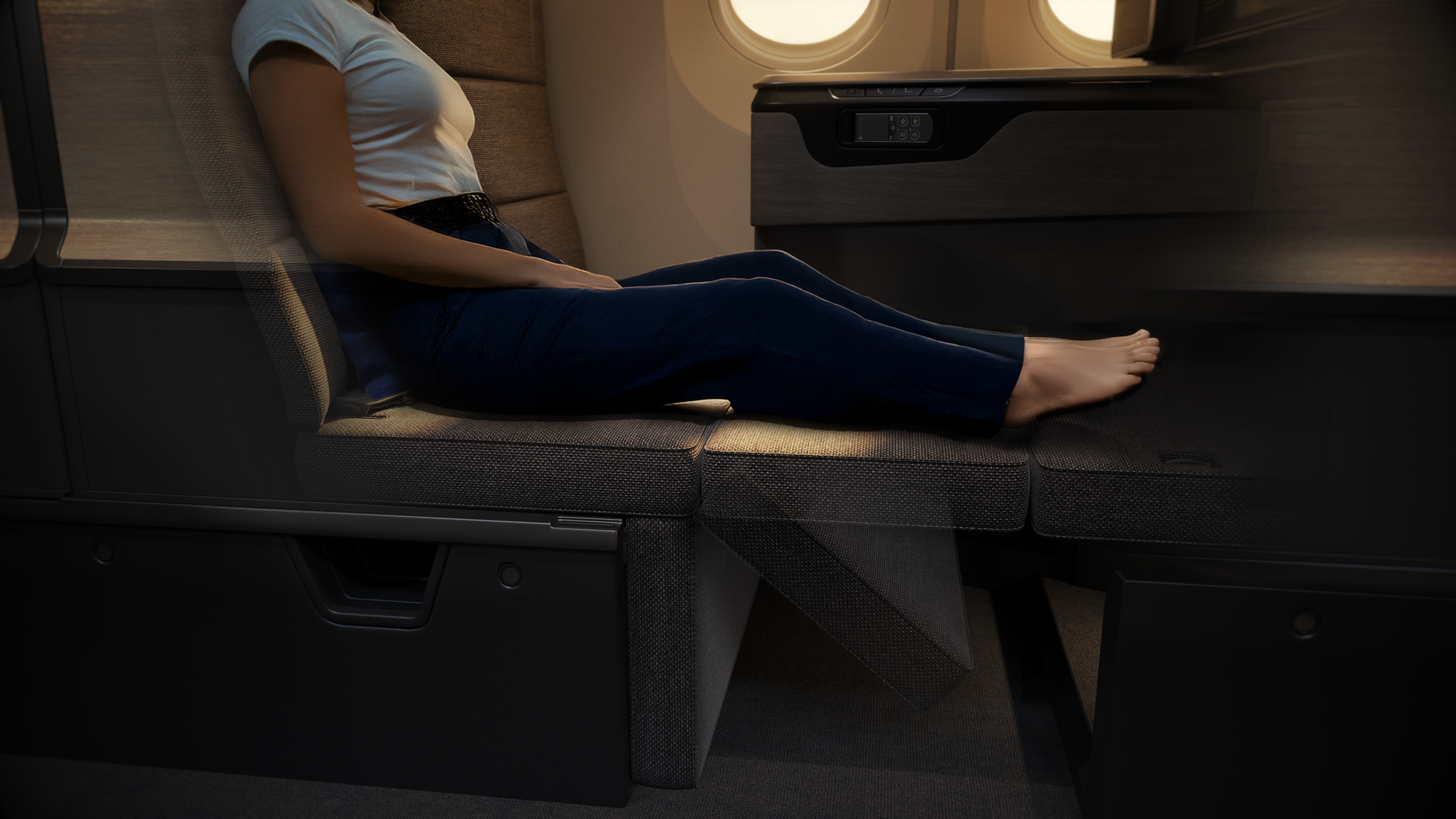
In product specification terms from ANA’s handout:
- Seat pitch: 103 inches per pair (so 51.5 inches per seat)
- Maximum bed length: 76.5 inches (194cm, or 6’4.5”)
- Maximum width: 41.5 inches (105cm)
- Width at the waist area: 27 inches (69cm)
- Inflight entertainment monitor: 24” HD, with Bluetooth audio
- Power supplies for passengers: AC, USB-C, USB-A, wireless charging pad (on the side table horizontal surface)
Storage-wise, there’s a raising compartment on the section of flat fabric surface immediately next to the main seat section, plus a small cupboard next to the monitor.
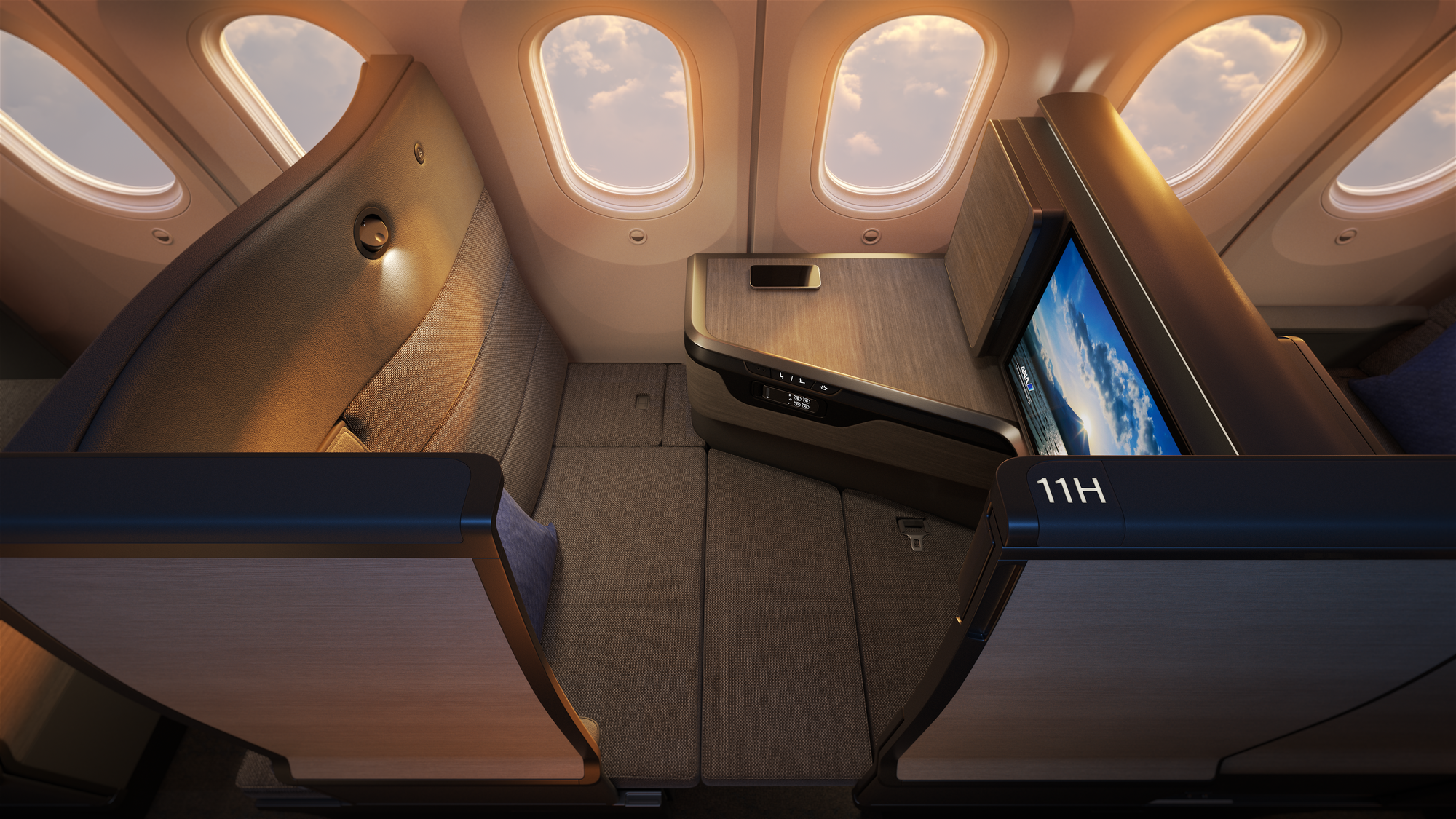
Insider this cupboard is a sizeable mirror and useful net storage, plus enough space for ANA”s headphones and a water bottle. Power supplies are neatly hidden underneath the main cupboard area, with the door extending below to hide cables and chargers away, but the gap beneath the cupboard door is large enough to allow head dissipation and for cables to snake out.
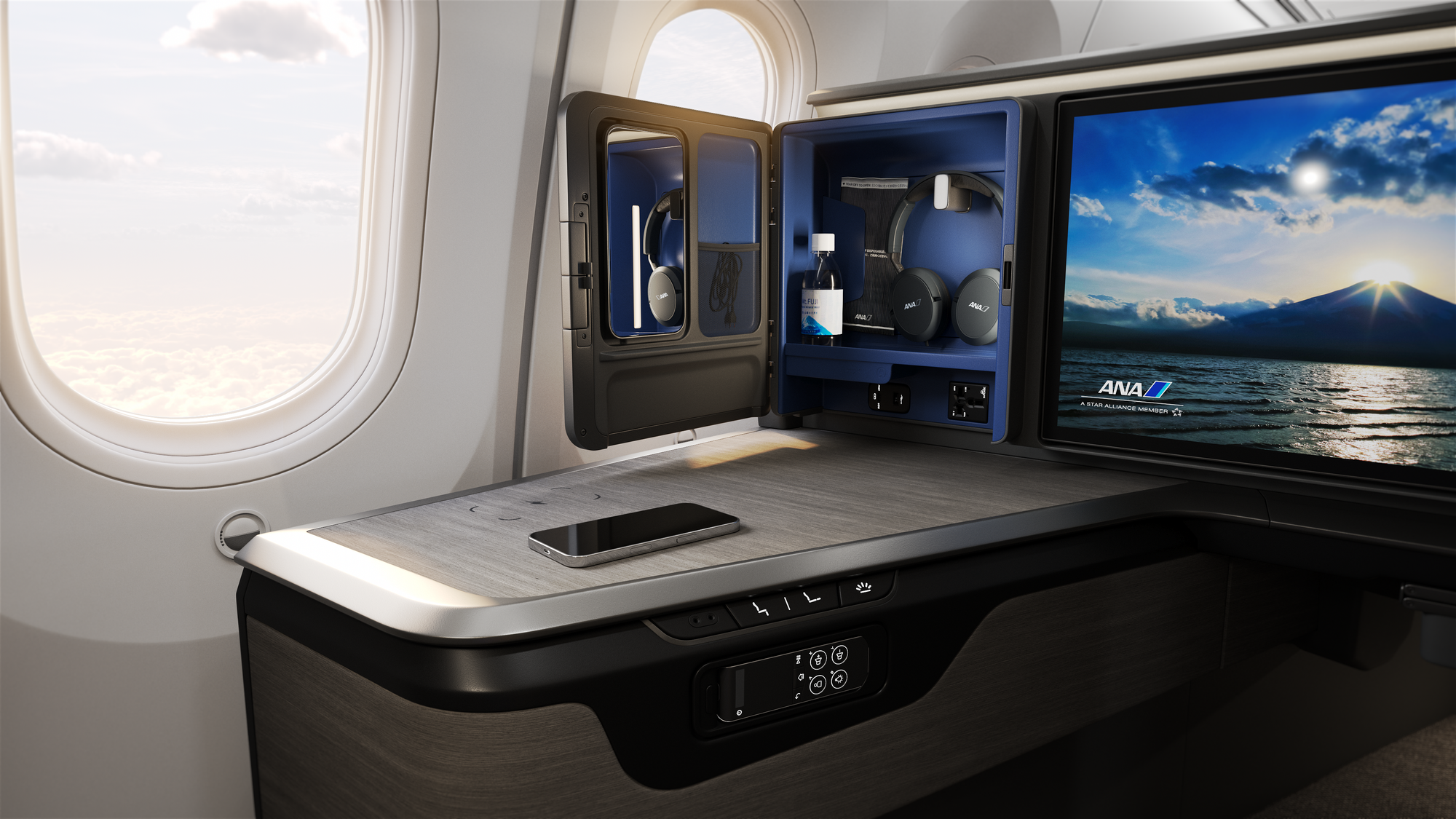
It might seem odd to be quite so impressed with power supply and aesthetic cable management on a seat that is otherwise so excellent, but it points to a real eye for detail and thought in its design process.
Diving deeper into the seat technicalities, there are some notable changes beyond the Fusio to The Room FX transition
Unusually for a modern business class product, there is no studio class business-plus seat type here: the way the tessellation of the forwards-backwards seat works, the front end of the cabin is the rear-facing aisle-adjacent seat, while the rear end of the cabin is the front-facing window-adjacent seat.
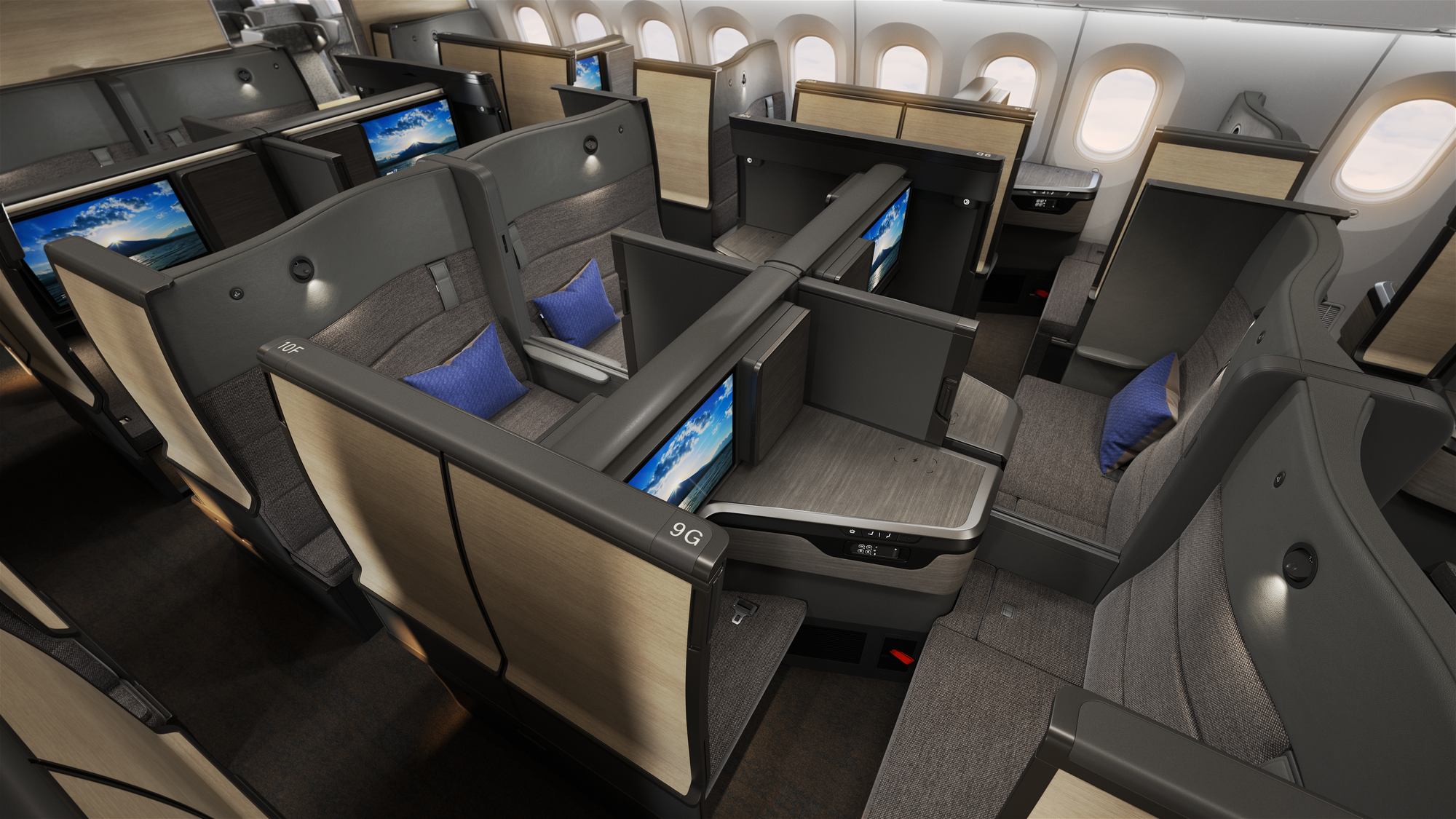
That’s actually a layout change from the 777-300ER: on that aircraft, the Fusio layout has the forward-facing seats as aisle-adjacent, and the window-facing seats as window-adjacent. I’ll follow up with ANA and Safran to figure out exactly why, but peering at the LOPA it may be a cabin interface reason.
(Updated to note: indeed, this is exactly the reason why: having the rearmost pair as a honeymoon centre means the aisle transition in the interface between business and premium economy works best.)
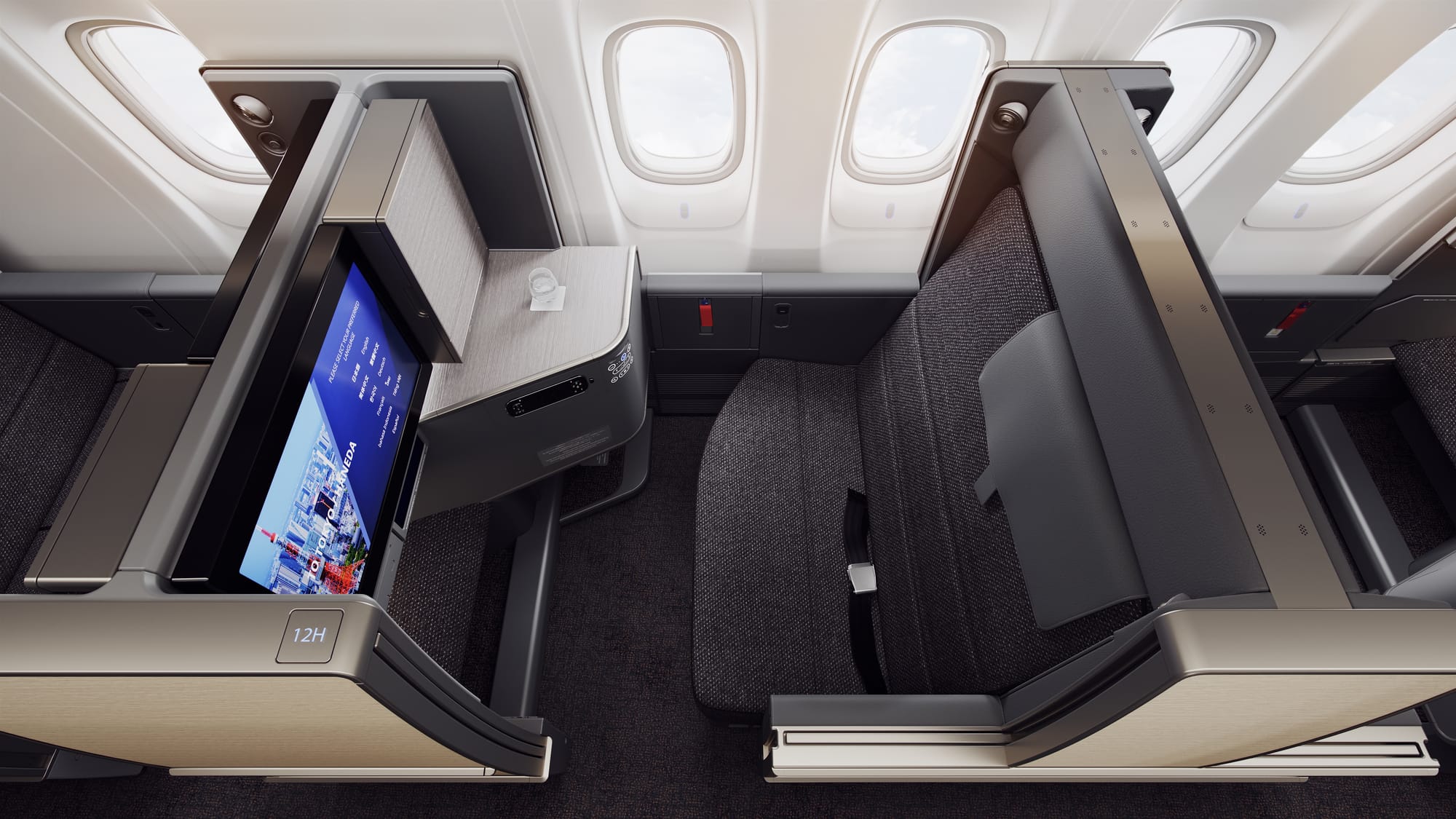
At the rear of the business class cabin, the forward shrouding of the seats taper in a way similar to how some inward-facing herringbone seats (like United’s) taper at the front of the 787. Here, it looks like there is a shape change in order to accommodate the bulkhead wall as the cabin changes from business to the 2-3-2 premium economy onboard.

The Room FX is more sculpted than Fusio: the backrest wall behind the seat is curved in a pleasant bucket shape way, rather than being flat. This is an inherent benefit in terms of gaining several inches of pitch, but also in terms of comfort: without the seat recline, the curved backrest is a big plus.
I’ve always considered that the Japanese market is a strong one for sofa-style seats: there’s a historic and cultural tradition of sitting on tatami mats either cross-legged or on the heels, and many Japanese homes still have floor seating with kotatsu heated tables in winter, while traditional hotels and ryokan will offer tatami rooms with floor seating.
A comfortable lounging position cross-legged on the seat cushion with the legrest raised will therefore be very familiar to ANA’s outbound home market, still a large part of its business — ANA tells me that this makes up approximately 40% of their market in business class at present.
Speaking of the market, this is overall a very premium-heavy 787-9: a total of just 206 seats, with 48 in business, 21 in premium economy and 137 in economy. That’s less than low-cost carrier configurations of the A321neo, and just six seats more than a Ryanair 737 MAX 8-200.
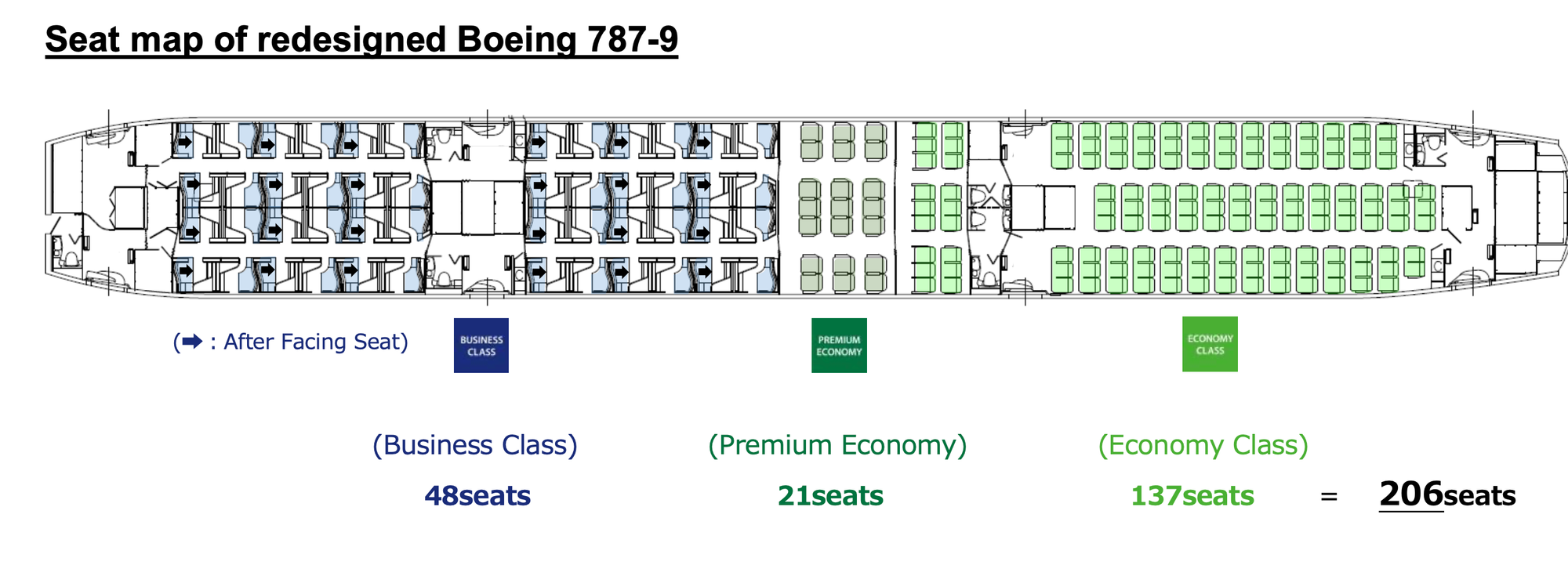
Update: getting up close with The Room FX reveals an incredibly impressive product, and a worthy successor to the world’s best business class
With the chance to get hands-on with The Room FX, and to talk in depth with designers and executives from Safran, ANA and Acumen, I’m highly impressed by The Room FX. Indeed, I can’t remember the last time I admired a new seat quite so much — perhaps the original The Room, Safran’s Fusio?
Safran mentioned in a couple of discussions that airlines still have doubts about sofa style seating, even in the face of a good passenger reception for Finnair’s Collins AirLounge product, both as operated for Finnair and indeed as used on wetlease to Qantas.
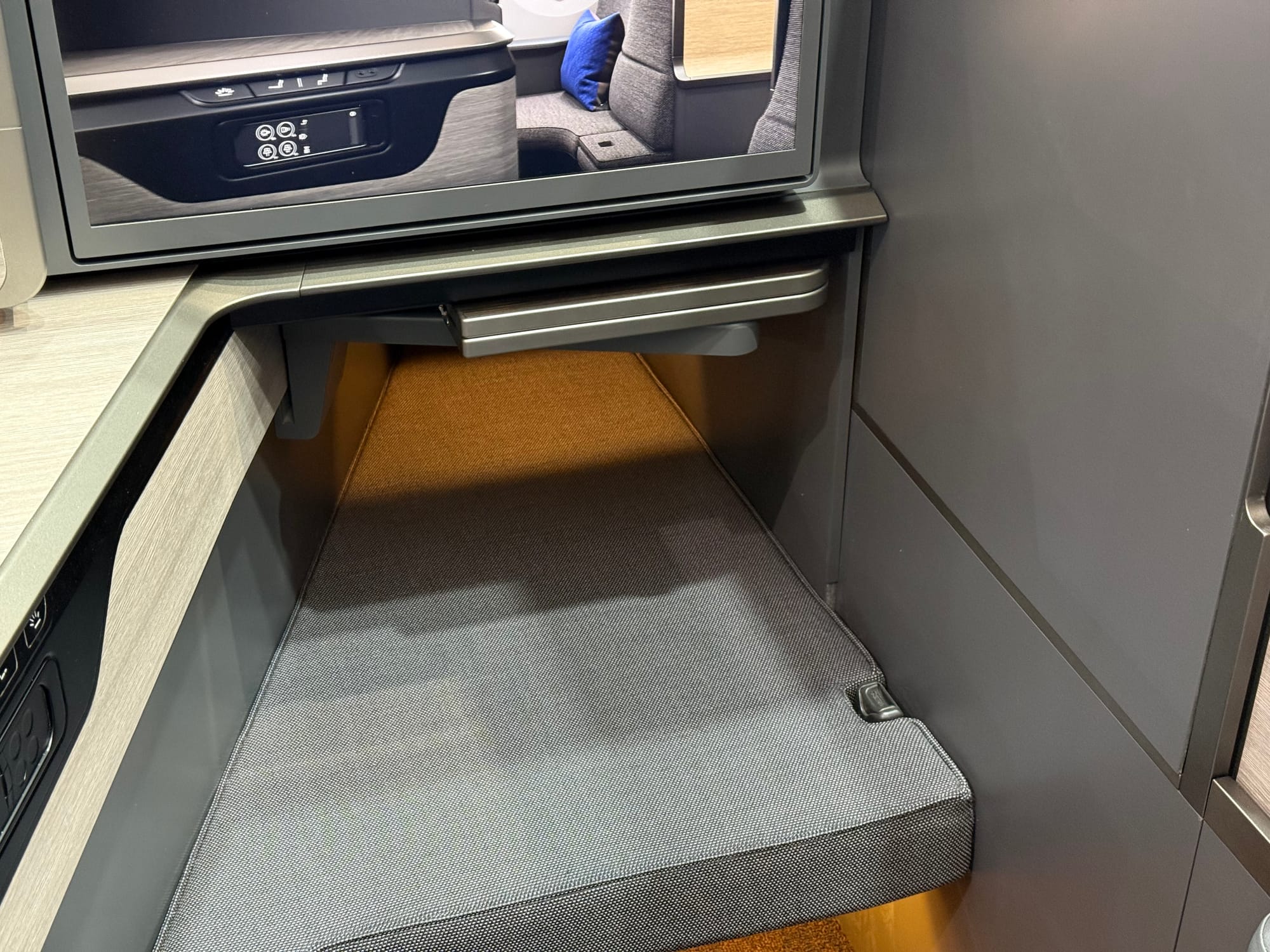
Indeed, I flew the Finnair seat to Osaka and back (as, full disclosure, a guest of the airline) and was very impressed by its level of comfort and space.
Safran seems to be confident in its fixes to two of the drawbacks of AirLounge as it is installed on Finnair: the extra weight that needed to be added during the certification process, and the two separate mechanisms required to turn the seat into a bed, one for the legrest and one for a small supplemental panel.
The Room FX is, apparently, no heavier than ANA’s previous non-doored product, while the seat turns into bed more with just the lifting of the footrest.
Returning to the seat, the curving 3D wall between seatbacks adds a lot of comfort, and indeed in seated mode is more immediately comfortable than many products that recline yet have a flat seatback.
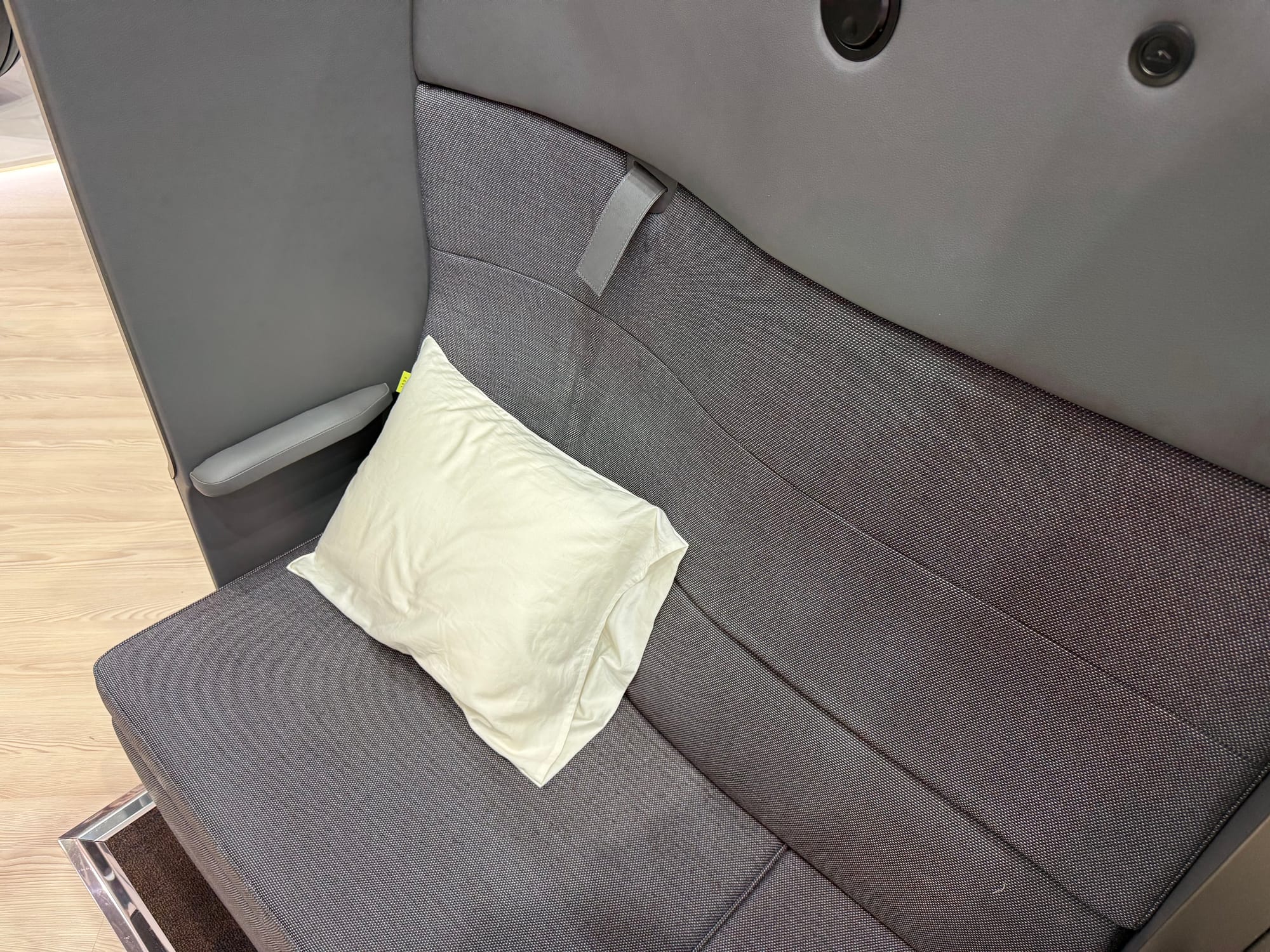
The seat is very spacious in terms of width, as you’d expect, and this space continues through bed mode — one of the real benefits of a sofa style seat.
(For those of us on the mockup wondering about power socket placement — where the mockup version had the plug oriented in the direction that means larger chargers or those with 90° cables like the standard UK plug would not have fit — in the renderings this is rotated a quarter turn so I no longer have concerns here.)
My one remaining question about the product is height between the two suites facing each other. I (190cm/6’3”) sat down opposite Safran’s Quentin Munier (195cm/6’5”) and our eyes met over the monitors.
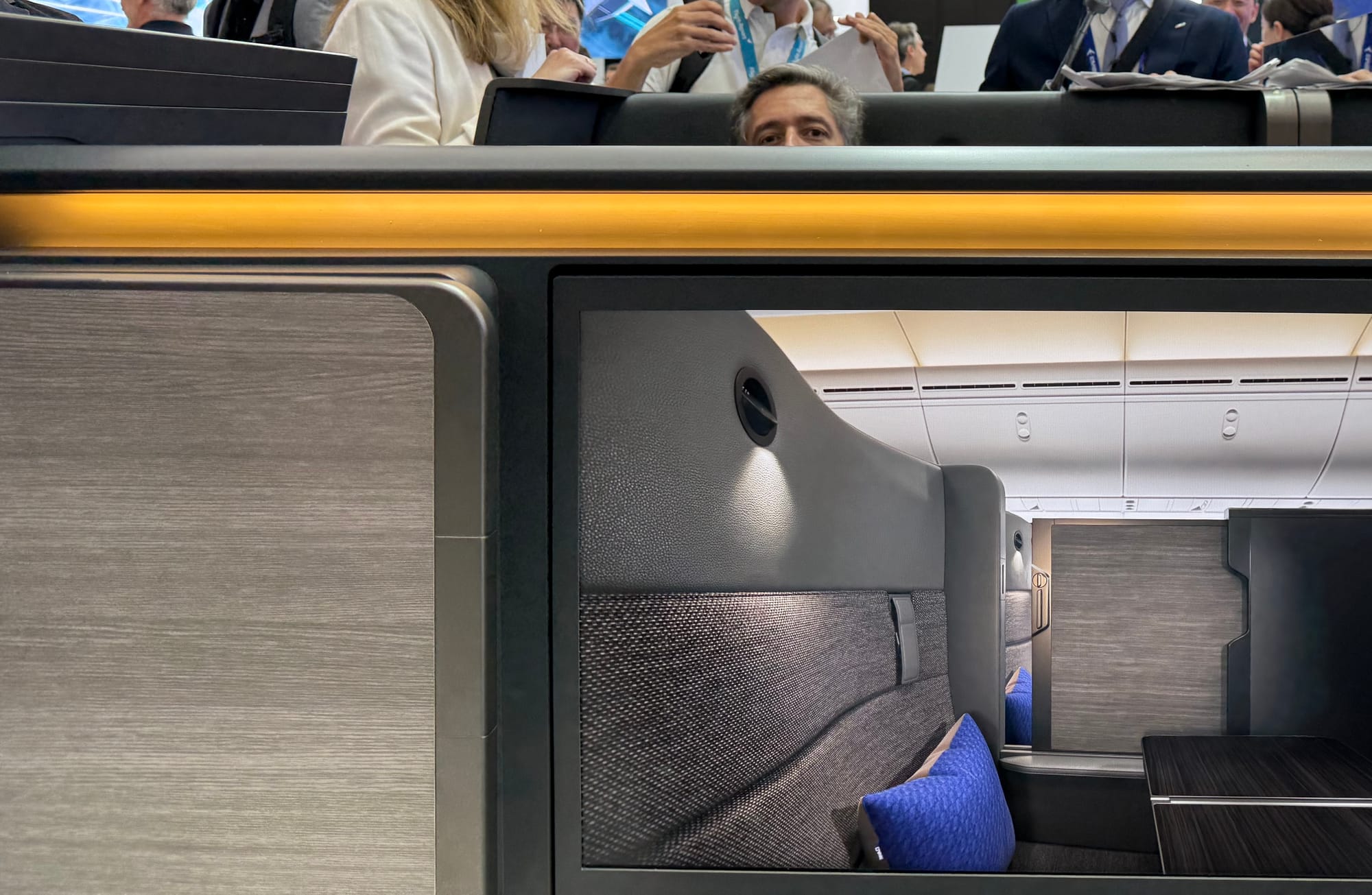
This is unlikely to be a consistent problem, not least because people will slouch into the seat as they relax, and Quentin and I are well over the 90th percentile height, but tall people do exist. There would seem to be few issues with adding a small strip of vertical translucent thermoplastic — dare I suggest with washi paper or shoji screen motifs? — on top to guarantee not locking eyes with the person in front of you.
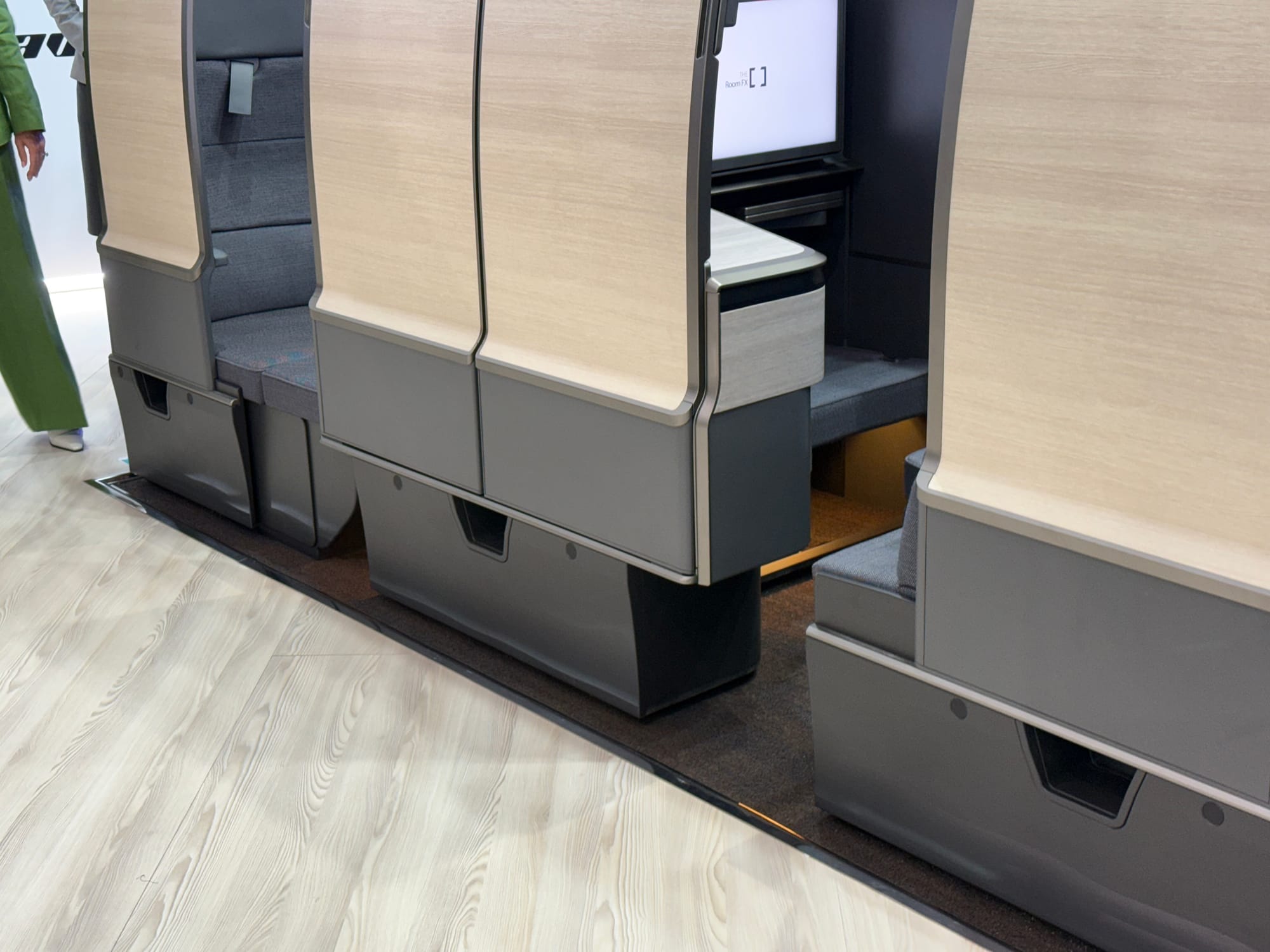
All in all, it strikes me that The Room FX is perhaps even better suited to the smaller 787 than Fusio is to the wider 777. The width benefits of the forwards-backwards stagger is much greater compared with other 787 seats, and the ability to install sizeable doors is a real benefit to passengers here. We’ll certainly see when the seat starts to roll out via linefit on the 787-9 next year. ANA, Safran, and Acumen are to be congratulated.
